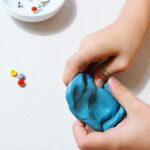Primitive reflexes

What are Primitive reflexes?
- Primitive reflexes are adaptive responses that develop during the neonatal period and integrate over time as the brain matures. These reflexes are automatic movements that are controlled by the brainstem and require no conscious thought. They are required for survival and development in the early months.
- Frequent causes of retained reflex: cesarean section, trauma, exposure to toxins, anesthetics, and other medications. Other possible causes include decreased tummy time, lack of crawling, chronic ear infections, and head injuries.
- Primitive reflexes include the Moro Reflex, Rooting Reflex, Palmar Grasp Reflex, Asymmetric Tonic Reflex, Spinal Galant Reflex, Tonic Labyrinthine Reflex, Landau Reflex, and Symmetric Tonic Neck Reflex. Below is an overview of all reflexes.

Moro Reflex:
- The Moro Reflex is the startle reflex.
- Common diagnoses include ADD, ADHD, Autism Spectrum Disorder.
- Signs of Retention include hypersensitivity to one or more sensory systems, vestibular deficits, oculomotor & visual perceptual, poor pupillary reactions to light, hypersensitive to auditory input, adverse drug reactions, poor stamina, and poor adaptability.
- Testing for retention: Have the child seated in a chair or laying down on their back, instruct them to open their arms and legs like a star, and then bring them and cross them.
- Exercises for retained Moro reflex. Open arms/legs in the starfish position and cross right arm and right leg over left. Do 10x per side, 1-2 times per day. Move slowly, counting to 5 between positions, and emphasize neck extension in the starfish position, and flexion when crossing over.

Rooting reflex:
- Automatic response to locate food/breast.
- Common diagnoses/health issues include deficits with speech, writing, eating, thyroid issues, autoimmune disorders, and hormone imbalance.
- Signs of retention include anterior tongue-tie, thumb sucking, oral hypersensitivity, poor eating, speech, and articulation problems, swallowing and chewing deficits, and dribbling
- Testing for retention: Stroke from nose to chin around the corner of mouth x3 times on each side of the face. Move strokes slightly lateral each time. Observe for twitch/movement at the mouth and same-sided hand. If movement is observed, exercises are needed to integrate reflexes.
- Exercises for retention: Stroke face in the horizontal direction from ear to mouth with light pressure. Make 3 strokes ½ inch lower than the previous stroke face in a vertical direction from nose to chin with light pressure. Make 3 strokes, ½ inch higher than the previous stroke. Do 3 strokes on each side for each exercise, 5x per day.

Palmar Grasp Reflex:
- Autonomic flexion of the fingers to grab when the palm is stimulated.
- Common Diagnoses: dysgraphia, speech and language problems.
- Sings of retention include poor manual dexterity, defects with pencil grip, poor visual coordination, poor posture during handwriting, poor writing skills, correlated speech and hand movements, and dysfunction of the tactile and proprioceptive sensory systems.
- Test for retention: Have the child hold their hand out with palm up and open flat, stroke the line crease in the hand, towards the middle of the wrist. Repeat this stroke 3-5 times. If the finger twitches or the elbow twitches/slightly bends, then integration exercises are needed.
- Exercises: Use resistance ball, playdoh, or theraputty. Start by squeezing with all fingers then index to the thumb, middle finger to thumb, ring finger to thumb, pinky to thumb then repeat. Do this 10 times 1-2x per day.

Asymmetric Tonic Neck Reflex:
- Fencers reflex.
- Assists with movement through the birth canal at delivery and is important for cross-pattern movements.
- Signs of retention include decreased hand-eye coordination, poor handwriting, uncoordinated gait, poor balance, poor visual motor skills/tracking, problems with math & reading, difficulty crossing the midline.
- Test for retention: With the child in standing, have them put their arms out straight. Have the child maintain this position while turning their head right to left. Observe elbow bending and shoulder turning in the same direction as the head. If the arm//shoulder/elbow moves with the neck motion, it is retained.
- Exercises: Have the child stand with arms straight out, palm down. Instruct the child to turn their head to one side and run-in place bringing knees high for 10 seconds and then left head to left for 10 seconds in a continuous motion. Complete 3 receptions, with 3 on each side, 1-3 times per day.

Spinal Galant Reflex:
- Tested in newborns to rule out brain damage.
- Sings of retention: postural issues like scoliosis or rotated pelvis, pain in the lower back, bedwetting after potty training, hyperactivity, attention issues, decreased endurance, chronic digestive issues, decreased lower body coordination, and pain in legs.
- Test for retention: In quadruped position, stroke down one side and then the other side of the spine at the lower back. Observe tightness, twitching, or jerky movements on the same side of the input. If observed the reflex is still present.
- Exercises: Have the child slowly move arms and legs up and out to a count of 10 then back in, doing 10 repetitions 1x per day.

Tonic Labyrinthine reflex:
- Foundational for postural stability for large muscle groups.
- Common in children with ADD and ADHD.
- Sings of retention include decreased balance, poor spatial awareness, toe walking, hypermobility of joints, weak muscles, poor posture, motion sicknesses, poor ability to climb, atypical head position.
- Testing: In prone, have the child put their arms down by their sides with their feet /legs extended flat. Instruct the child to lift their head, legs, and arms off the ground while keeping arms and legs straight. If a child is observed to have difficulty keeping extremity straight, their reflex is still present.
- Exercises: In prone, have the child extend their legs and put their arms up in front of them. Instruct them to lift arms and legs off the ground and hold for 15 seconds. Complete this for 10 repetitions 1x per day.

Landau Reflex:
- Necessary for postural development.
- Appears in utero.
- Signs of retention: poor posture and muscle tone, summersaults are challenging, poor coordination for activities that require the upper and lower body to move together, delayed motor development, pelvis rotates, commonly skips crawling in infancy.
- Testing for retention: In prone on the floor, have the child lay face down with arms flat in front of them. Instruct them to lift their upper body and arms off the ground and keep their feet off the ground. Observe the lifting of the feet, if seen reflex may still be present.
- Exercises: Complete the same exercise as testing, but have the child maintain the position for 15 seconds.

Symmetric Tonic Neck Reflex:
- Foundation for crawling.
- Signs of retention: poor posture in standing, poor seated posture, ape-like position in walking, low muscle tone, W sitting position, sloppy/messy eater, poor hand/eye coordination.
- Testing: In quadruped, have the child with neutral flat back, bend to tuck chin into chest in a slow motion with 8-10 second count, and then lift the head bringing towards the back with 8-10 second count. Observe for back twitching, arch of the back, bending of the arms, or weight shift back towards leg when moving head up. If these are observed, the reflex may still be present.
- Exercises: The exercise is performed in the same position and motions as testing. Have the child hold the position for 10-15 seconds. Complete 10-15 repetitions 1x per day.







